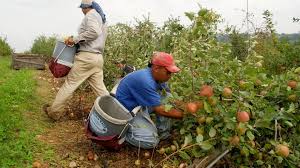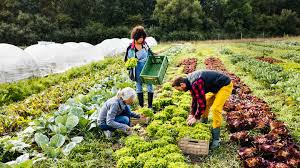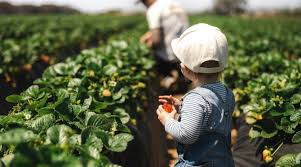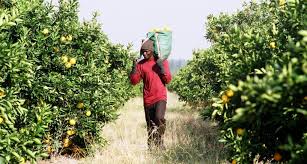The science and art of producing and marketing fruits and nuts is called pomology, while the science and art of producing and marketing vegetables is called olericulture.
Before any production, there are certain requirements that must be met to ensure successful production and marketing of fruits and vegetables. This article focuses on the requirements for establishing fruit orchards and vegetable farms.
Read Also: 12 Medicinal Health Benefits of Oats (Avena Sativa)
Basic Requirements for Establishing Fruit Orchards and Vegetable Farms

Fruits and vegetables are of great importance in human nutrition as they serve as major food sources. An orchard is defined as a parcel of land devoted to the cultivation of fruits.
Even though fruits and vegetables differ in their nature, life cycle, and mode of production, their production requirements are similar since they depend on the same basic resources land, labour, environmental conditions, and market availability. The following are basic requirements for establishing fruit orchards and vegetable farms.
1. Environmental Factors Affecting Fruit and Vegetable Production
These include climate-related factors such as rainfall, temperature, light, and humidity. A grower must understand the crop to be produced and its climatic needs to ensure maximum productivity.
i. Rainfall: This is a natural source of water supply to plants. Water is crucial since 70–80% of the fresh weight of herbaceous plants and about 50% of woody plants consists of water. It acts as a medium for nutrient uptake and substance transportation within the plant.
It is a primary raw material in photosynthesis and is essential in maintaining turgor pressure in stomata, enabling gas exchange. Water replaces the amount lost during transpiration.
Plants lose about 98% of absorbed water through transpiration. Water needs vary with plant species and age, increasing as plants grow larger. Lack of moisture reduces air humidity, increasing its drying effect and directly affecting processes like transpiration, diffusion, and evaporation.
Excess moisture increases disease susceptibility and causes lodging. In indoor cultivation, misting is used to increase humidity, especially during winter when heaters reduce indoor moisture.
ii. Temperature: Plants respond differently to temperature, depending on species. Each plant has a specific temperature range for optimal growth and reproduction. Generally, most horticultural crops thrive between 15°C and 30°C. Horticultural crops are classified based on temperature response:
iii. Hardy Plants: Tolerate low temperatures but not high ones. E.g. cabbage, cauliflower, apple.
iv. Tender or Tropical Crops: Tolerate high temperatures but not low ones. E.g. banana, mango, okra.
Temperature responses also vary by growth stage. Seedlings are more vulnerable to high temperatures, flowers are more susceptible than vegetative parts, and roots are more affected by low temperatures than aerial parts.
High night temperatures increase respiration and reduce food reserves, hindering tuber and root development in crops like potatoes and carrots. Additionally, high temperatures increase pest and disease activity and reduce flowering and fruiting in crops such as tomatoes.
Optimal fruit formation requires night temperatures around 21°C. Low temperatures slow germination, reduce growth, and damage fruits.
v. Light: The sun is the primary source of light for plants. Light influences growth through its quality, intensity, and duration. Indoor cultivation often requires artificial lighting. Light is essential for photosynthesis and seed germination in some species. The three major aspects of light include:
vi. Quality (Wavelength): Affected by cloud cover. Continuous cloud cover reduces light quality, which affects fruit colour. The visible light range is 390–735 nanometres.
vii. Intensity (Brightness): Some plants, like maize and tomato (sun plants), thrive in full sunlight, while others, such as asparagus and chrysanthemum, prefer shade. Seedlings of crops like cocoa require shade in early stages. Sunlight intensity at midday can reach 10,000 foot candles, but most plants utilize only 50% for photosynthesis.
viii. Duration (Photoperiod): Refers to hours of light received daily. Plants are classified based on this into:
i. Long Day Plants: Flower with more than 14 hours of light (e.g. onion, peas, lettuce).
ii. Short Day Plants: Flower with less than 10 hours of light (e.g. citrus).
iii. Day Neutral Plants: Flower at 12 hours of light (e.g. tomato, maize).
ix. Humidity: The water content of air is measured as relative humidity (RH), using a psychrometer. RH is influenced by vapour pressure and temperature. As temperature rises and vapour remains constant, RH decreases. Water requirements for plant growth are closely tied to humidity.
RH, which depends on rainfall and temperature, greatly affects plant development. Some crops like banana require high humidity. Others like mango need high humidity for growth but low humidity for flowering. Low humidity is useful in drying crops like maize. However, high humidity increases the risk of pest and disease attacks.
Read Also: 12 Medicinal Health Benefits of Emilia Sonchifolia (lilac tasselflower)
2. Land Requirements for Fruit Orchards and Vegetable Farms

Land provides the base for cultivation, containing vital elements such as soil, water, and minerals. Soil must have good texture, be deep enough for root penetration, and allow easy tilling.
Sandy loam is ideal for fruit and vegetable farming due to its moisture retention, nutrient-holding capacity, and good drainage. A soil pH of 5.5–6.5 is optimal. Land elevation should support air and water drainage to prevent erosion. A gentle slope is most suitable for fruit and vegetable production.
3. Labour Needs in Fruit and Vegetable Farming
Labour refers to the physical or mental effort used in production. While small gardens require minimal labour, large-scale farms need more hands, especially during harvesting and pruning. Commercial orchards should be established in areas where seasonal labour is accessible and affordable. Vegetable farming also requires continuous labour from planting to processing to avoid yield loss or spoilage.
4. Essential Inputs for Fruit and Vegetable Production
Inputs are supplementary materials vital for successful cultivation. These include seeds or seedlings, fertilisers, herbicides, machines, and insecticides. Inputs must be available and affordable. Proper input management increases yield, reduces production costs, and enhances profitability.
5. Market Considerations for Fruit and Vegetable Farms

Home gardens primarily serve household consumption, but surplus produce must be planned for. Surplus can be preserved through processing or sold to generate income. For commercial production, access to reliable markets and marketing strategies is crucial. While dried fruits can be stored long-term, fresh produce is perishable, making it important to identify markets before planting.
6. Financial Requirements in Fruit and Vegetable Farming
Finance plays a vital role in acquiring inputs, paying labour, and renting land. Family labour may suffice in small-scale setups, but commercial production often demands hired labour. Hence, adequate funding is essential for operations and productivity.
The success of fruit orchards and vegetable farms does not rely solely on inputs but also on the management ability of the operator. Efficient resource management reduces production costs and increases profit. Poor management, regardless of resource availability, often leads to business failure.
Do you have any questions, suggestions, or contributions? If so, please feel free to use the comment box below to share your thoughts. We also encourage you to kindly share this information with others who might benefit from it. Since we can’t reach everyone at once, we truly appreciate your help in spreading the word. Thank you so much for your support and for sharing!

